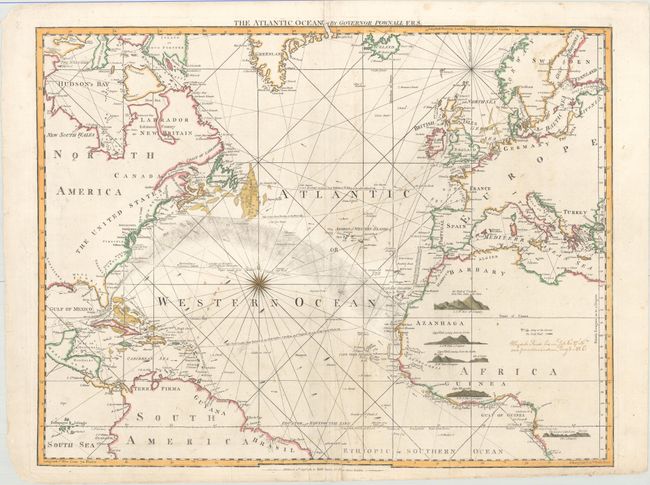Catalog Archive


Auction 156, Lot 415
Scarce Sea Chart with References to African Slave Trade
"The Atlantic Ocean by Governor Pownall F.R.S.", Jefferys/Sayer & Bennett

Subject: North Atlantic
Period: 1787 (dated)
Publication: The West-India Atlas...
Color: Hand Color
Size:
25.1 x 19.7 inches
63.8 x 50 cm
Download High Resolution Image
(or just click on image to launch the Zoom viewer)
(or just click on image to launch the Zoom viewer)